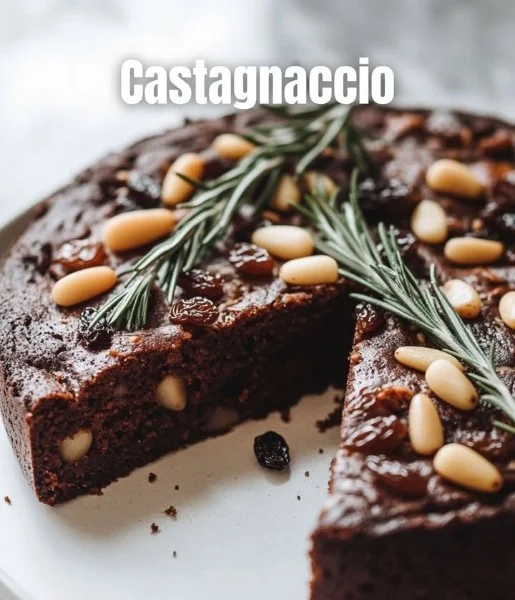Castagnaccio, a delightful chestnut flour cake, comes from the beautiful regions of Italy. This rustic dessert is made from simple ingredients and offers a unique flavor that you won’t find in everyday cakes. It’s naturally gluten-free and perfect for those who want to try something different.
Why Make This Recipe
You should make Castagnaccio because it’s easy, healthy, and packed with flavor. Chestnut flour gives the cake a rich, earthy taste, while the pine nuts and raisins add a touch of sweetness. Plus, it’s a great dessert for special occasions or a lovely treat to enjoy with coffee or tea.
How to Make Castagnaccio
Ingredients:
- 250g chestnut flour
- 350ml water
- 2 tbsp olive oil
- 40g pine nuts
- 40g raisins
- Fresh rosemary
- Pinch of salt
Directions:
- Start by soaking the raisins in warm water for about 15 minutes, then drain them well.
- In a large bowl, mix the chestnut flour, water, olive oil, and a pinch of salt until you have a smooth batter.
- Pour the batter into a greased baking dish.
- Top the batter with the drained raisins, pine nuts, and fresh rosemary.
- Drizzle a little more olive oil on top of everything.
- Bake in a preheated oven at 180°C (350°F) for 30–35 minutes, or until the cake is firm and has a golden color.
How to Serve Castagnaccio
You can serve Castagnaccio warm or at room temperature. It’s great on its own or with a little yogurt or whipped cream. Pair it with a cup of coffee or tea for a delightful afternoon snack.
How to Store Castagnaccio
Store any leftover Castagnaccio in an airtight container at room temperature for up to three days. You can also refrigerate it to keep it fresh for a bit longer. Just be sure to bring it back to room temperature before serving.
Tips to Make Castagnaccio
- Make sure to mix the batter well to avoid lumps in the cake.
- Adjust the amount of pine nuts and raisins according to your taste.
- If you want a little sweetness, you can add a tablespoon of honey or sugar to the batter.
Variation
You can try adding other nuts like walnuts or almonds for a different texture and flavor. Some people also like to add chocolate chips for a sweet twist on this traditional recipe.
FAQs
Q1: Is Castagnaccio gluten-free?
A1: Yes, Castagnaccio is gluten-free because it is made with chestnut flour instead of wheat flour.
Q2: Can I use dried fruits other than raisins?
A2: Absolutely! You can use dried figs or apricots instead of raisins for a different taste.
Q3: How do I know when Castagnaccio is done baking?
A3: It’s done when the cake is firm to the touch and has a nice golden color on top. You can also insert a toothpick to check; it should come out clean.
Enjoy making your Castagnaccio, and savor every bite of this unique Italian treat!

